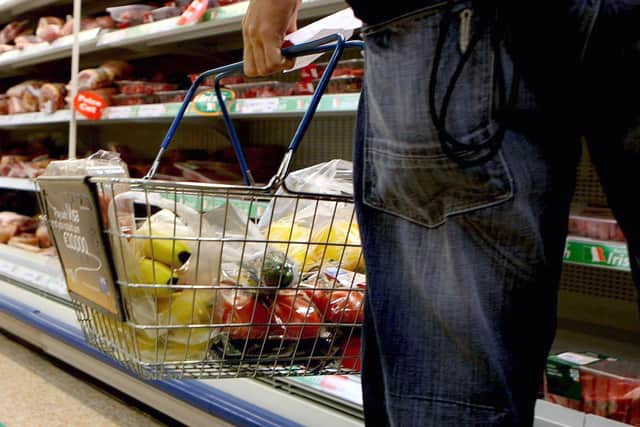Skimpflation: What is Skimpflation as supermarket customers left fuming - and is it legal?
and live on Freeview channel 276
Skimpflation is a new term doing the rounds as more than half of Brits say they have noticed food and drink items have been downgraded in quality or quantity, yet cost the same (or more!) then they used to. New research by Barclays Bank has revealed that consumers believe crisps, sweets and chocolates have shrunk the most, while some feel takeaways and restaurant meals have also decreased in quality without a reduced price.
Consumers have taken to social media citing that more needs to be done to address the issue of ‘skimpflation.’ One person wrote on Twitter: “Product recipes are sneakily tweaked, with ingredients downgraded to reduce costs. However, the product’s price remains the same or even increases. This needs calling out and mandatory labelling, for example, New, lower quality recipe, 20% less product.”
Advertisement
Hide AdAdvertisement
Hide AdWhile another said: “What really annoys me about #skimpflation #shrinkflation is when they give you a smaller product in the original sized packaging!!”
According to Barclays, the impact of “skimpflation” goes beyond food and drink, as two-fifths (41 per cent) of people have noticed that the standards of some of the (non-food) products and services they buy have been downgraded, yet still cost the same or more. These shoppers are most noticing the declining quality of clothing, chosen by 44 per cent, closely followed by toilet paper (43 per cent), and toiletries/cosmetics (37 per cent).


Shrinkflation
The term ‘skimpflation’ comes after supermarkets were also criticised for ‘shrinkflation’. According to consumer champion, Which? two-thirds of people have noticed food and drink items that have shrunk in size but not price.
Hard-pressed shoppers feel they are falling victim to grocery ‘shrinkflation’, according to research from Barclays. The most common victims of shrinkflation, according to the survey respondents, were chocolate (50%), crisps (40%), biscuits (39%) and snack bars (35%).
Advertisement
Hide AdAdvertisement
Hide AdIs shrinkflation legal?
According to Which? the short answer is, yes. However, supermarkets and manufacturers must work within strict guidelines when it comes to shrinkflation. The British Retail Consortium (BRC) states that shrinking pack sizes isn’t misleading, as prices and quantities are always stated on the packaging.
Andrew Opie, director of food and sustainability at the BRC, told Which?: ‘Given the challenges facing households from the cost of living squeeze, retailers are solely focused on finding ways to limit rising prices for customers against the rising cost of production, while maintaining the excellent quality of products.
‘Prices and sizes of all products are clearly labelled so that customers can make informed decisions about their purchases.’
Brands must clearly display what is inside the packaging, while items and quantities must be labelled clearly.
Comment Guidelines
National World encourages reader discussion on our stories. User feedback, insights and back-and-forth exchanges add a rich layer of context to reporting. Please review our Community Guidelines before commenting.
